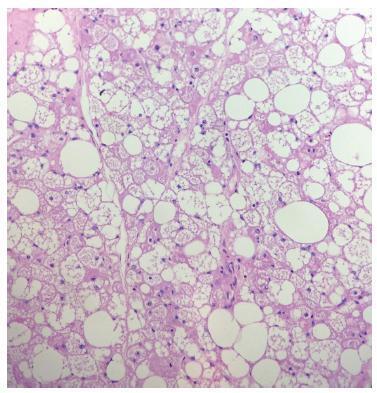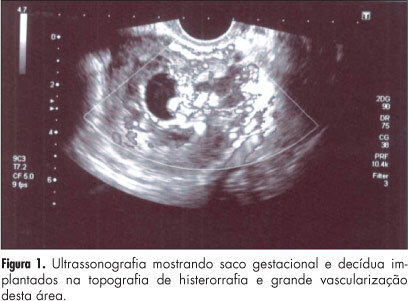Summary
Revista Brasileira de Ginecologia e Obstetrícia. 2011;33(5):231-237
DOI 10.1590/S0100-72032011000500005
PURPOSE: To investigate the relationship between quality of life and spinal fracture in women aged over 60 living in Southern Brazil. METHODS: A case-control study was conducted with the application of the WHOQOL-bref questionnaire to 100 women living in the city of Chapecó (SC), aged over 60, postmenopausal, white or Caucasian, with no important cognitive impairment or a history of diseases known to affect bone metabolism, or malignant neoplasias. The population was divided into two groups depending on the presence or absence of fractures in the spine radiography. We analyzed variables related to the current and previous medical history, life habits and family history of fractures, and the domains and facets that compose the WHOQOL-bref. All participants were informed about the objectives and methodologies adopted and gave written informed consent to participate in the study. RESULTS: The mean age of the women in the fracture group was older than that of women with fractures (p<0.05). Also women with fractures tended to belong to a higher social class, to have more years of study, a higher family income, and a greater use of alcoholic drinks (p<0.05). In the evaluation of the WHOQOL-bref domains, the fracture group had the highest average in the psychological field (..=63.6± 3.0) and the lowest in the environment field (..=9.3±58.8). In the group without fracture, the highest average also occurred in the psychological domain (..=67.2± 9.3) and the lowest in the field of social relations (..=57.5±7.7). Statistical analysis showed no significant correlation between the averages of the facets that make up the areas between the groups with and without fractures. CONCLUSIONS: This study suggests that there is no impairment of quality of life among older women with vertebral fractures, but the relation between QL and time of occurrence and severity of the fractures should be better evaluated. Both groups had higher scores in the psychological domain, showing that the respondents rely on personal beliefs, spirituality and religion, accept their physical appearance while maintaining self-esteem and the ability to think, to learn and to concentrate despite the presence of this disease. There was no statistically significant difference between groups or between domains in the same group.
Summary
Revista Brasileira de Ginecologia e Obstetrícia. 2018;40(4):232-234
Mammary hibernomas are extremely rare benign tumors composed of brown fat cells, with only five cases previously reported in the literature. We report the case of a 42- year-old female patient with a painless growing mass in her right breast. A partial mastectomy was performed, and the diagnosis of hibernoma was confirmed by the histological features and the immunohistochemical profile. Although hibernoma is a benign tumor, its main differential diagnoses include aggressive lesions, making the accurate diagnosis essential to provide adequate care to the patient.

Summary
Revista Brasileira de Ginecologia e Obstetrícia. 2006;28(4):232-237
DOI 10.1590/S0100-72032006000400005
PURPOSE: to identify maternal and perinatal factors related to neonates with birthweight >4,000 g. METHODS: cross-section cohort study with 411 consecutive cases of fetal macrosomia (FM) which occurred from March 1998 to March 2005. Data were compared to 7,349 cases of fetal birthweight >2,500 and <3,999 g which occurred in the same period. Maternal variables (maternal age, parity, diabetes, previous cesarean section, meconium-stained amniotic fluid, cephalopelvic disproportion, main cesarean section indications) and perinatal variables (birth injury, <7 1-min and 5-min Apgar score, fetal and early neonatal mortality range, need of neonatal intensive care unit) were analyzed. For statistical analysis the chi2 test with Yates correction and Student's t test were used with the level of significance set at 5%. RESULTS: FM was significantly associated with older mothers, more parous and <7 1-min Apgar score (p<0.05; OR=1.8; 95% CI: 1,4-2.5) and <7 5-min Apgar score (p<0,05; OR=2.3; 95% CI: 1.3-4,1), diabetes mellitus (p<0.05; OR=4.2; 95% CI: 2.7-6.4), meconium-stained amniotic fluid (p<0.02; OR=1.3; 95% CI: 1.0-1.7), need of neonatal intensive care unit (p<0,05; OR=2.0; 95% CI: 1.5-2.7), early neonatal mortality (p<0,05; OR = 2.7; 95% CI: 1.0-6.7), cesarean section (p < 0.05; OR = 2.03; 95% CI: 1,6-2,5) and cephalopelvic disproportion (p < 0.05;OR = 2.8; 95% CI: 1.6-4,8). There was no statistical difference between birth injury and fetal mortality range. In the FM group the main cesarean section indications were repeat cesarean sections (11.9%) and cephalopelvic disproportion (8.6%); in the normal birthweight group, repeat cesareans (8.3%) and fetal distress during labor (3.9%). CONCLUSIONS: in spite of the characteristic limitations of a retrospective evaluation, the analysis demonstrated which complications were associated with large fetal size, being useful in obstetric handling of patients with a diagnosis of extreme fetal growth. FM remains an obstetric problem of difficult solution, associated with important maternal and perinatal health problems, due to the significant observed rates of maternal and perinatal morbidity and mortality in developed and developing countries.
Summary
Revista Brasileira de Ginecologia e Obstetrícia. 2021;43(3):232-234
Summary
Revista Brasileira de Ginecologia e Obstetrícia. 2008;30(5):232-240
DOI 10.1590/S0100-72032008000500005
PURPOSE: to determine caffeine consumption in pregnant women and to evaluate its association with demographic, socioeconomic, reproductive, lifestyle and maternal nutritional status. METHODS: it is a cross-sectional study performed between 2005 and 2007. The present analysis refers to the period among the 8th and 13th gestational week and included 255 pregnant women from 18 to 40 years, clients of a municipal health center in Rio de Janeiro. The outcome variable was caffeine consumption, quantified by a semi-quantitative food frequency questionnaire, which count with a list containing 81 items and eight options of consumption frequencies; besides it being previously validated in a sample of employees of the State University of Rio de Janeiro. The caffeine intake was quantified starting from the consumption of: powdered chocolate, chocolate bar or chocolate, soft drink, coffee and mate tea. The statistical analysis was performed by means of fitting a multivariate linear regression. RESULTS: the median and the mean caffeine consumption were, respectively, 97.5 and 121.1 mg (standard deviation, sd = 128.4). The high caffeine consumption (> 300 mg/day) was observed in 8.3% of pregnant women. It was observed in the multivariate model that women with earlier menarche (β = -0.15), with more household partners (b = 0.17) and who didn’t make use of medicines (β = -0.24) presented larger tendency to high caffeine consumption association that was statistically significant (p <0.05). CONCLUSIONS: the caffeine consumption for most of the pregnant women was inferior to the limit of 300 mg/day as commited in other studies. Tendency was observed toward higher consumption of caffeine in pregnant women with earlier menarche, with more household partners and who didn’t make use of medicines.
Summary
Revista Brasileira de Ginecologia e Obstetrícia. 2004;26(3):233-240
DOI 10.1590/S0100-72032004000300010
OBJECTIVE: to evaluate the existence of intra and intercytophathologists disagreement in the analysis of cervical slides previously diagnosed as atypical skin cells with undetermined significance (ASCUS), and the degree of this disagreement. METHODS: a transversal study of 50 cervical slides of Pap smears previously diagnosed as ASCUS, collected in November 2000 in Contagem town. They were analyzed and classified by four cytopathologists according to the first Bethesda system review of 1991 (normal, atrophic alteration, inflammatory alteration, suggestive of LoSIL, suggestive of HiSIL, suggestive of invasive carcinoma and others). After the first analysis, the slides were renumbered in a random order and sent to the same cytophathologists for a new exam. The Kappa test and the weighted Kappa were used in the analysis of the results. RESULTS: there was a high degree of disagreement between the different analyses of the same cytopathologist, varying from 7.8 to 74.4% according to the Kappa test. When a weight of 20% was settled for each degree of disagreement, these values increased from 16.1% for the cytopathologist A to 81.08% for the cytopathologist B. Concerning the comparative analyses made by different examiners the Kappa test values obtained varied from 50.6% to 63.4% in the normal and weighted versions, respectively. CONCLUSIONS: this study confirms the existence of subjectivity in the analysis of the ASCUS category and imprecision in the analysis criteria by the same examiner.
Summary
Revista Brasileira de Ginecologia e Obstetrícia. 2013;35(5):233-237
DOI 10.1590/S0100-72032013000500008
Implantation of a pregnancy within a cesarean delivery scar is considered to be the rarest form of ectopic pregnancy, with a high morbidity and mortality. Pregnancy in a cesarean delivery scar may cause catastrophic complications which may result in hysterectomy and compromise the reproductive future of a woman. We report an ectopic pregnancy in cesarean scar case in a 28-year old pregnant woman that was treated with success with the association between three treatment modalities (methotrexate, uterine artery embolization and curettage) and preserve her fertility.

Summary
Revista Brasileira de Ginecologia e Obstetrícia. 2005;27(5):233-234